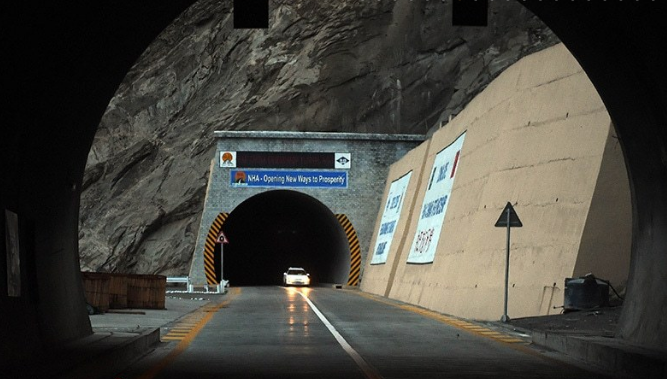
Since April this year, news portals have been replete with developments regarding the China–Pakistan Economic Corridor (CPEC). The CPEC project, which was originally proposed by China in May 2013 and inaugurated in August 2013, has once again come into the limelight. This is largely due to the recent signing of an agreement to commence work on the $46 billion agreement.
A 3,000-kilometer network of roads, rails, and pipelines, the CPEC will connect Pakistan’s Gwadar Port to Kashgar city, northwestern China’s Xinjiang province. Evidently, the route is viewed as an alternative to China’s present route (through Straits of Malacca) of sourcing from the Middle East and Africa. CPEC will also become a crucial part of China’s dream of creating a “Silk Road,” connecting to markets in the Middle East, Central Asia, and Europe.
Apart from the potential benefits for the Chinese economy, it is regarded as a win-win situation for Pakistan. If the project is implemented as planned, it will undeniably infuse life into Pakistan’s relatively precarious economy and its energy and infrastructure sectors. Masood Khan, former Pakistani Ambassador to China had said that Xinjiang and Gilgit-Baltistan would form “the central plank in the emerging architecture for new silk routes.” However, analysts and commentators sometimes overlook the importance of CPEC for China’s Xinjiang province, or its contribution to China’s Western Development Strategy.
China’s Western Development Strategy
After the growth of China’s eastern side, the Chinese government diverted its efforts towards developing the west and continues to invest heavily in the region. In January 2000, China officially commenced the execution of its Western Development Strategy (WDS), which covered six provinces and five autonomous regions, including Xinjiang and Tibet. Norihiro Sasaki, of the Institute of Developing Economies (IDE) in Japan, has said that apart from strategic reasons, the motivations behind the WDS also includes the need to contain the regional government’s frustration with the centre on development in the western sector. She also notes that frequent instances of separatist movements of the ethnic minorities in the western region cannot be ignored for long. It is through WDS, facilitated by the PLA, that the stability of Communist Party of China (CPC) rule can be guaranteed.
Xinjiang’s geographic location makes it ideal for China’s “Look West” strategy. China shares its borders with fourteen countries. Out of these, Xinjiang province borders eight: Afghanistan, India, Mongolia, Pakistan, Kazakhstan, Kyrgyzstan, Tajikistan, and Russia. This makes the province strategically critical for Beijing. Xinjiang is plagued by a secessionist movement of Muslim Uighurs and growing terrorist activities attributed to Uighur-founded al-Qaeda-linked East Turkestan Islamic Movement (ETIM).
This is where Pakistan and the economic corridor come in. Pakistan is important for the success of this strategy, largely due to its proximity to Xinjiang. Placed at the crossroads of the Silk route and sandwiched between China and the West, Pakistan’s cooperation is needed in stabilizing the situation in Xinjiang and the abutting region. Anecdotal evidence suggests that Muslim Uighurs and their movement have got support from jihadi groups in Pakistan, in the form of training and safe havens. With cooperation from Pakistan’s government, the Chinese government has hoped to suppress foreign support to the Uighur population in Xinjiang for anti-Chinese activities. The Pakistani government has been forthcoming in helping China to the best of its abilities. Even when Pakistan’s abilities to tackle the issue seem limited, China has limited doubts about the intentions of its “all-weather friend.”
Considering Xinjiang’s distance from China’s coastal cities, it seems prudent to offer the province benefits from economic linkages in Pakistan and speedy access to the Middle East and other regions. Pakistan has been working on fulfilling China’s plan of developing establishing a Special Economic Zone (SEZ) in Kashgar and Khordos in Xinjiang. The plans include the creation of “manufacturing hubs, trade houses, and clearing houses.” As stated by Masood Khan, long term plans include the option of instituting a trans-regional economic zone comprising China, Pakistan, Afghanistan, and Central Asia.
Although most of the plans look good on paper, there are inherent challenges to the project apart from ecological concerns and Pakistan’s internal political issues. The worsening security situation in some provinces in Pakistan through which the corridor would pass is the foremost issue. Also, China and Pakistan have previously signed many Memorandums of Understanding and projects, but not all of them have materialised as fruitfully as hoped for. Sakib Sherani, a former economic adviser to the Pakistan government, has attempted to evaluate the economic benefits of the project for Pakistan and pointed out potential problems that could make the venture unfavourable for Pakistan. General opposition to the project within Pakistan has also become more pronounced in recent days. Any long-term delays in the realization of CPEC would not only affect Pakistan’s hope of a better infrastructure and energy supply, but would also hamper China’s dreams of effectively addressing its WDS and the Silk Road project. Indeed, there is a lot at stake, especially in view of the growing violence and instability in some areas of Pakistan, which are crucial for the success of CPEC.
***
Image: Aamir Qureshi-AFP, Getty


